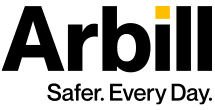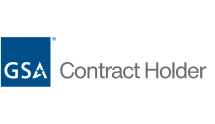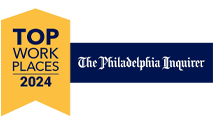Developing a comprehensive health and safety checklist is an important first step in creating a safe workplace. Identifying potential hazards and developing procedures to handle them will ensure the safety of your employees and show your commitment to building a culture of safety in your workplace.
Before creating your checklist here are four things to keep in mind:
- Research the health and safety regulations that apply to your state and workplace. Nationwide regulations can be found here. For a full overview of the hazards that exist, schedule an on-site assessment with an Arbill representative.
- Organize the regulations that pertain to your workplace. For example, all regulations regarding equipment should be put together, allowing any employee to easily find the regulation they are looking for that pertain to that specific equipment.
- Create easy-to-read pages for each item that needs review. Include boxes beside each item that can be checked to make it clear that the item is in accordance with regulations and provide a place for the person doing the checks to date and sign.
- Keep the health and safety checklist in an easily accessible place for anyone to reference including employees, managers and health inspectors. If necessary, translate the checklist into different languages depending on the requirements of your employees.
Below are ten things to focus on and include in your workplace safety checklist:
1. Floors
Keep floors clear of any debris that could cause tripping. If your business works with fluids, such as a car repair shop, immediately mop up spills or leaks to avoid incidents. What may look like a small spot of oil could cause a slip and can present a potential environmental nonconformance challenge. The best course of action is to place an absorbent on top of the oil, try to determine the cause of the leak and take the necessary steps to fix it.
2. Staircases
Staircases leading to storage areas can become a resting place for items like boxes or tools. Work with your team to properly store the supplies or tools and check your staircases each day for any tripping hazards. Also, ensure stairways have adequate lighting and signage to avoid trips and falls. This includes both inside stairwells as well as outdoor or exit stairwells.
3. Lighting
Proper lighting in office areas can help prevent eyestrain for computer workers and adequate lighting in stairwells is necessary to avoid accidents. Outdoor lighting is also important to help create a safe journey from the workplace to the parking lot for employees and visitors. It is important to regularly check lighting and replace light bulbs that have broken or gone out.
4. Footwear
Proper footwear is essential for employees that work in an industrial workplace. It is important for each employee to have the proper protection and correct fit. If necessary, workers also need added protection such as steel-toed boots or shoes. Employers should work with their employees and provide a footwear program that ensures the correct fit, proper protection, and adequate selection.
5. Emergency Procedures
Train your employees on emergency procedures such as what to do in case of a fire or worker injury. Clearly mark all exits, ensure you have the proper signage and place emergency contact numbers in plain sight. Regularly review emergency procedures and ensure all employees understand how to react.
6. First-Aid Kits
Supply your workplace with a fully stocked first-aid kit that includes all of the materials you will need. Encourage workers to treat even small scratches to avoid infections or other complications. Provide first aid kits even in office areas, as workers can suffer cuts or fall over boxes or chairs.
7. Personal Protective Equipment
Be sure that you have adequate supplies of safety clothing and equipment. Depending on the nature of your workplace, this may include goggles, hard hats, gloves, footwear, or protective outerwear. Take the necessary steps to ensure the equipment you provide properly fits your employees is in the proper condition and provides the necessary level of protection.
8. Cleanliness
An unclean workplace can pose a health and safety hazard. Make sure that all restrooms are cleaned at least once a day and require employees to clean up after themselves in lunchrooms and cafeterias. Look for possible signs of rodent infestation such as shiny droppings or gnawed food packages and work with an exterminator to treat the problem.
9. Elevated Surfaces
Elevated surfaces can present a tripping hazard in your workplace. As a best practice, mark any elevated areas with warning signs to ensure employees are aware of the change in elevation. Also be sure to check unplanned changes such as frayed carpet or dips in floors and encourage employees to report any issues.
10. Machines and Power Tools
Keep all machines and power tools in working order and inspect them regularly. Make sure tools aren’t rusty and check the condition of machine guards and other protective pieces. Also, be certain that all employees are properly trained to use the equipment before allowing them to work alone.
These ten items represent a great starting point as you begin to put together your safety checklist. Regular inspections of these and other potential hazards in your workplace will help keep employees safe and assist with your organization’s compliance efforts. Also, it is important to encourage employees to take more responsibility for your organization’s safety efforts and regularly report any issues or hazards they may find.
To better understand potential hazards in your workplace, schedule a consultation with an Arbill safety advisor today and for more information about safety trends.
Have a Safe Day!














